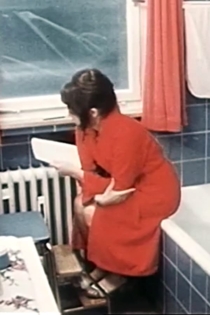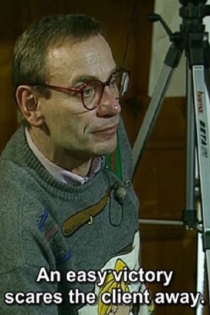
Harun Farocki
1944 - 20143000 Häuser
Hartmut Bitomsky, Ulrich Knaudt
Harun Farocki, Hartmut Bitomsky
“Six young people move through a city in order to establish the starting point of their joint action. But they can’t agree on the topic. In the end everybody goes their own way and leaves the city.” - Hartmut Bitomsky
3000 Houses

Videogramme einer Revolution
Harun Farocki, Andrei Ujica
Ion Caramitru, Elena Ceaușescu
Videograms of a Revolution is a 1992 documentary film compiled by Harun Farocki and Andrei Ujică from over 125 hours of amateur footage, news footage, and excerpts from the Bucharest TV studio overtaken by demonstrators as part of the December 1989 Romanian Revolution.
Videograms of a Revolution
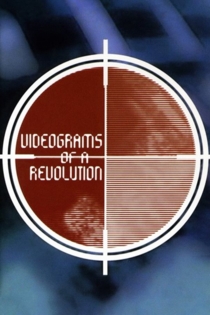
Auge / Maschine III
Harun Farocki
The third part of the Eye/Machine cycle structures the material around the concept of the operational image. These are images which do not portray a process but are themselves part of a process. As early as the Eighties, cruise missiles used a stored image of a real landscape then took an actual image during flight, the software compared the two images. A comparison between idea and reality, a confrontation between pure war and the impurity of the actual. This confrontation is also a montage and montage is always about similarity and difference. Many operational images show coloured guidance lines, intended to portray the work of recognition. The lines tell us emphatically what is all important in these images, and just as emphatically what is of no importance at all. Superfluous reality is denied – a constant denial provoking opposition.
Eye / Machine III

Aufschub
Harun Farocki
Respite consists of silent black-and-white film shot at Westerbork, a Dutch refugee camp established in 1939 for Jews fleeing Germany. In 1942, after the occupation of Holland, its function was reversed by the Nazis and it became a 'transit camp.' In 1944, the camp commander commissioned a film, shot by a photographer, Rudolph Breslauer. “By exhuming the scattered fragments and traces of the phantom film (intertitle cards, ideas for the scenario, graphic elements), Harun Farocki inscribes the Dutch footage within the genre of the corporate film.
Respite

Ausweg
Harun Farocki
"If there is a relationship between production and destruction, between the development of productive and destructive forces, then the atom bomb is the ultimate weapon of the post-industrial age. Greatest tonnage, highest mortality, maximum devastation. But what comes next, what are the weapons of the post-industrial age?" - Harun Farocki
A Way

Zum Vergleich
Harun Farocki
In Comparison revisits issues explored in the director's 2007 two channel installation Comparison Via a Third. Spanning continents and cultures, the film focuses on the brick in its many contexts, from the collective efforts of a community building a clinic in Burkina Faso, through semi industrialized moldings in India, to industrial production lines in Germany, France, Austria and Switzerland. Through its notable structure and its captivating rhythms, In Comparison presents various methods of labor production, allowing for an assessment that changes with every layer and goes well beyond a simple binary divide.
In Comparison
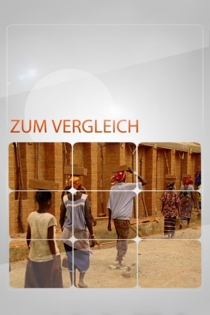
Auge / Maschine II
Harun Farocki
In Eye/Machine II, Farocki has brought together visual material from both military and civilian sectors, showing machines operating intelligently and what it is they see when working on the basis of image processing programs. The traditional man-machine distinction becomes reduced to "eye/machine"" where cameras are implanted into the machines as eyes. As a result of the Gulf War, the technology of warfare came to provide an innovative impulse, which boosted the development of civilian production. Farocki shows us computer simulated images looking like something out of science-fiction films: rockets steer towards islands set in a shining sea; apartment blocks are blown up; fighter aircraft fire at one another with rockets and defend themselves with virtual flares.
Eye / Machine II
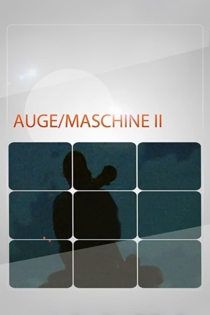
Bilder der Welt und Inschrift des Krieges
Harun Farocki
Ulrike Grote
Farocki’s intriguing and troubling film explores the processes of visual perception and how they affect our understanding of history and society. In a work reminiscent of the writings of Paul Virilio and Michel Foucault, Farocki examines a range of phenomena including aerial reconnaissance photos of the Auschwitz concentration camp.
Images of the World and the Inscription of War

Something Self Explanatory (15x)
Harun Farocki, Hartmut Bitomsky
Rolf Becker, Herbert Chwoika
An educational film about an aspect of political economy. The concepts of use value, barter value and labor as a commodity are the subjects; they are intended to introduce the process of understanding the theory of value of work and the law of values, alienation and fetish.
Something Self Explanatory (15x)

Gefängnisbilder
Harun Farocki
A film composed of images from prisons. Quotes from fiction films and documentaries as well as footage from surveillance cameras. A look at the new control technologies, at personal identification devices, electronic ankle bracelets, electronic tracking devices.
Prison Images
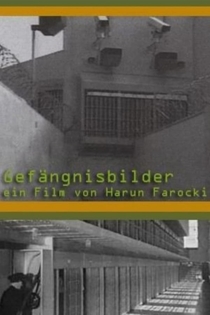
Übertragung
Harun Farocki
Examines monuments scattered all over the world that have become goals for pilgrims and tourists and now serve to meet a whole range of different needs, from personal memory to spiritual enlightenment and religious sentiment. Farocki starts from the Vietnam Memorial in Washington ... thousands of people visit it every day, touch the letters and trace the names of family and friends in an attempt to establish a link between their own lives and the past. Other objects of pilgrimage – including the foot of the statue of the Apostle in St Peter’s and the Bocca della Verità in Rome as well as the devil’s footprint in the Frauenkirche in Munich and the monument in the Buchenwald concentration camp – meet the same need for understanding and purification. Stone is the material in which the collective memory of a life or an event in the past is immortalized and becomes an object of worship. At the same time, the memory of thousands of visitors is preserved in the traces of wear it displays.
Übertragung
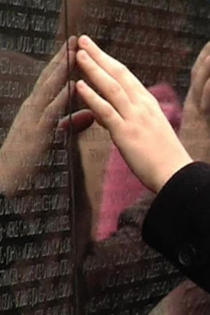
Leben - BRD
Harun Farocki
A series of 32 short scenes, uniformly set in West German instructional and training classes, that show various tasks among the citizenry being done solely as the result of exhaustive preparation - everything from women preparing to give birth, to strippers stripping, to policemen making arrests. Farocki uses the material to savagely dissect the West German mode of life. ~ Nathan Southern, Rovi
How to Live in the German Federal Republic
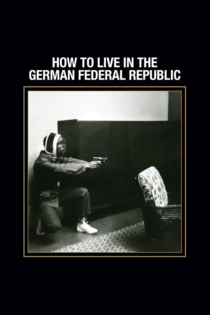
Wie man sieht
Harun Farocki
In 'As You See', Farocki searches for those instances and facts in the history of technology that have been overlooked or ignored, also exploring the ambivalent relationship between technologies developed for civil use and those designed for military purposes. Thus the film for instance describes how in the 1970s workers at the British arms factory Lucas Aerospace attempted to develop socially useful products to replace the company's military output. Rather than following a linear argument, this essay-film juxtaposes disparate images and weaves them into a mosaic-like structure which makes it possible for the viewers to make their own connections between the different images as well as between the images and the commentary.
As You See

